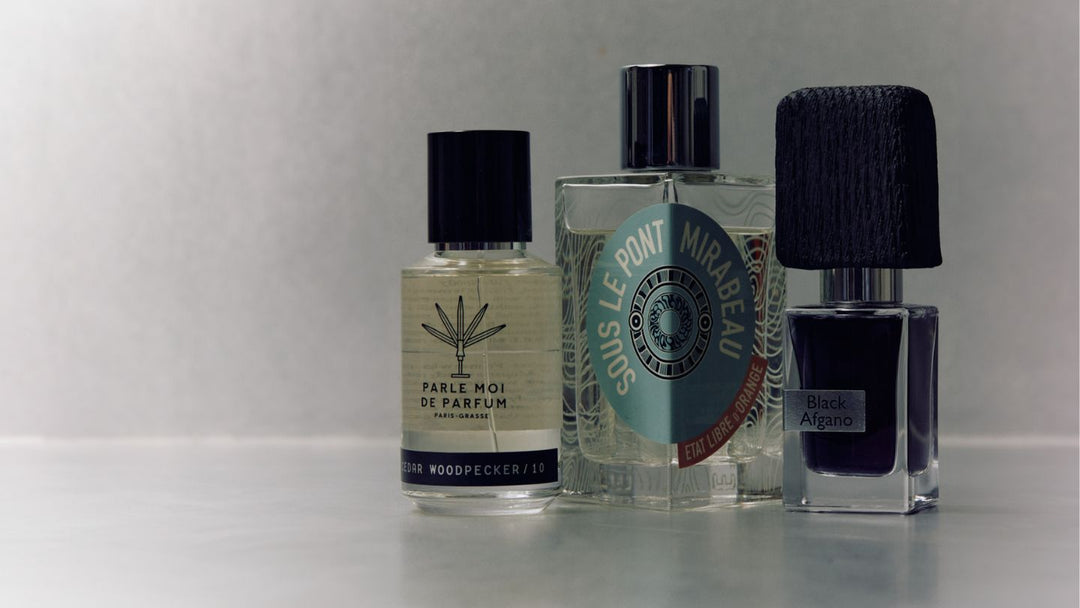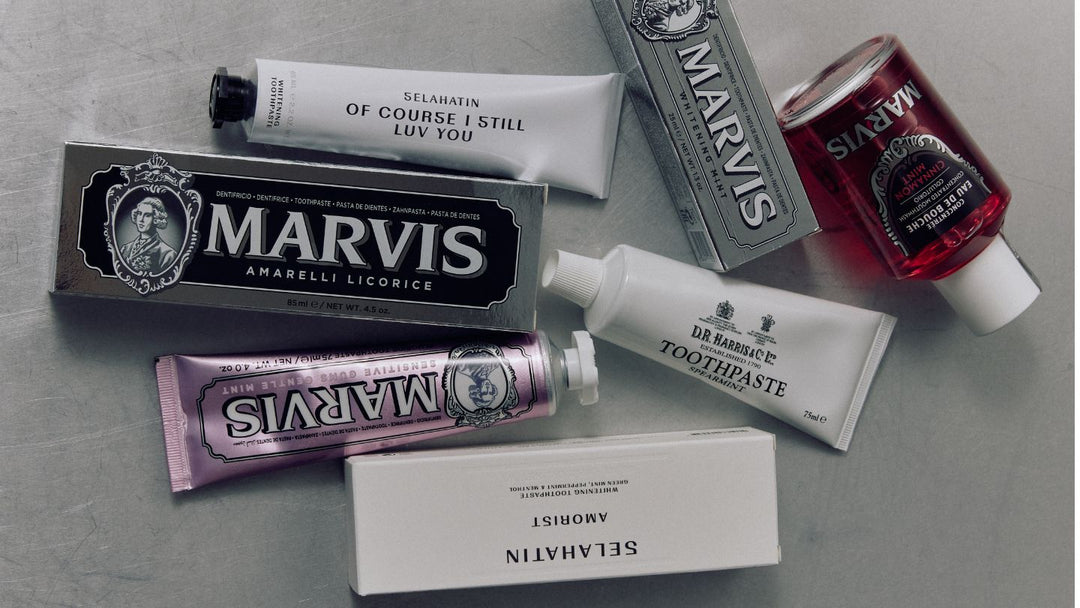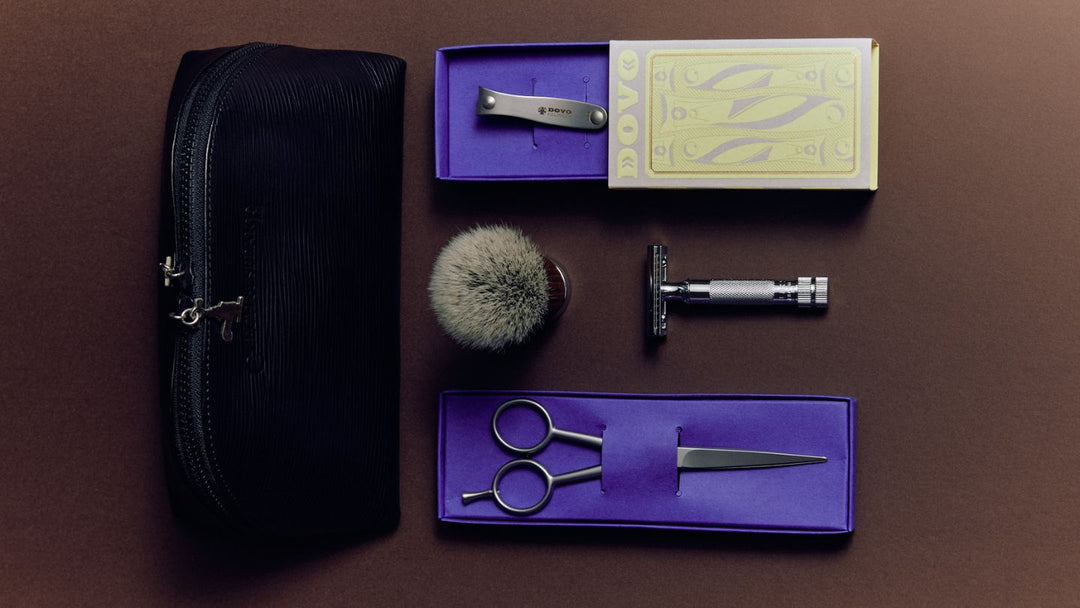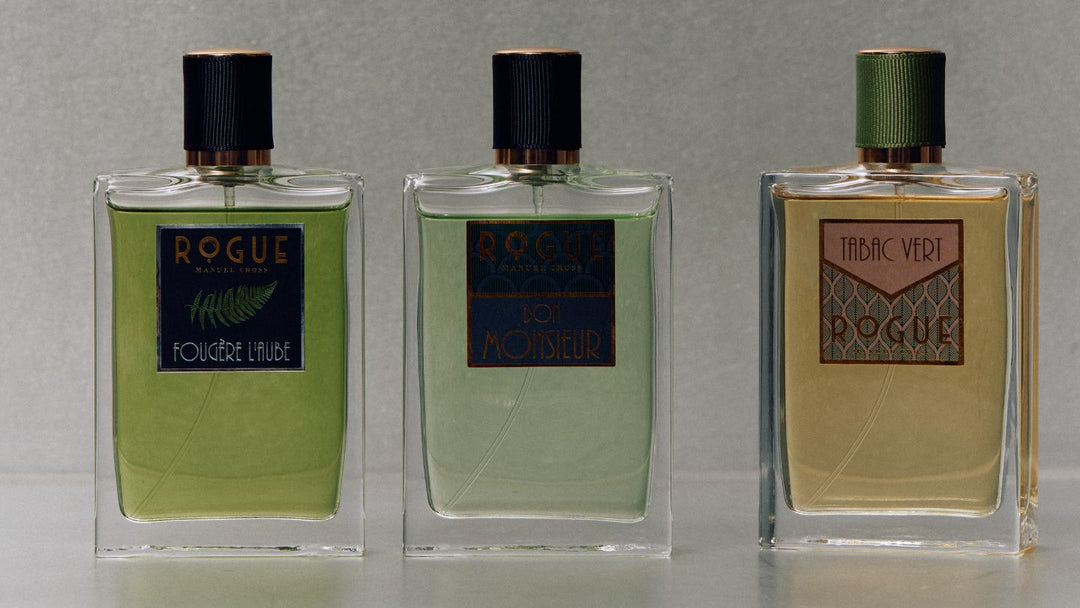A Brush with Excellence: How to Use a Safety Razor
The Cutting Edge: An Introduction to the Double-Edge Safety Razor
Consider this: when it comes to the art of wet shaving, the only ‘cutting edge’ that need concern you is the razor firmly clasped in the grip of your hand. The double-edge ‘safety’ razor is a marvel of timeless design and a must for connoisseurs, but is equally a sensible choice for those seeking a grooming experience suitable for even the most sensitive of skin types, prone to shave rash, ingrown hairs, and razor burn.
Known as the safety razor because it offers a milder and less intimidating shaving experience than that of its predecessor: the ‘cutthroat’ straight razor, which demands the steadiest of hands. A prominent protective guard ensured that only a small portion of the cutting edge was exposed. This innovation equally heralded the disposable razor blade, which could be discarded once it became dull, eliminating the need for regular sharpening or honing. This design feature, however degraded with plastic disposable cartridges in contemporary times, is appreciated for its eco-friendly aspect and amongst the above reasons, explains its resurgence.
This guide serves as an initiation for those unacquainted with the art of using a safety razor, detailing the techniques that ensure a shave that is impeccable in every aspect.
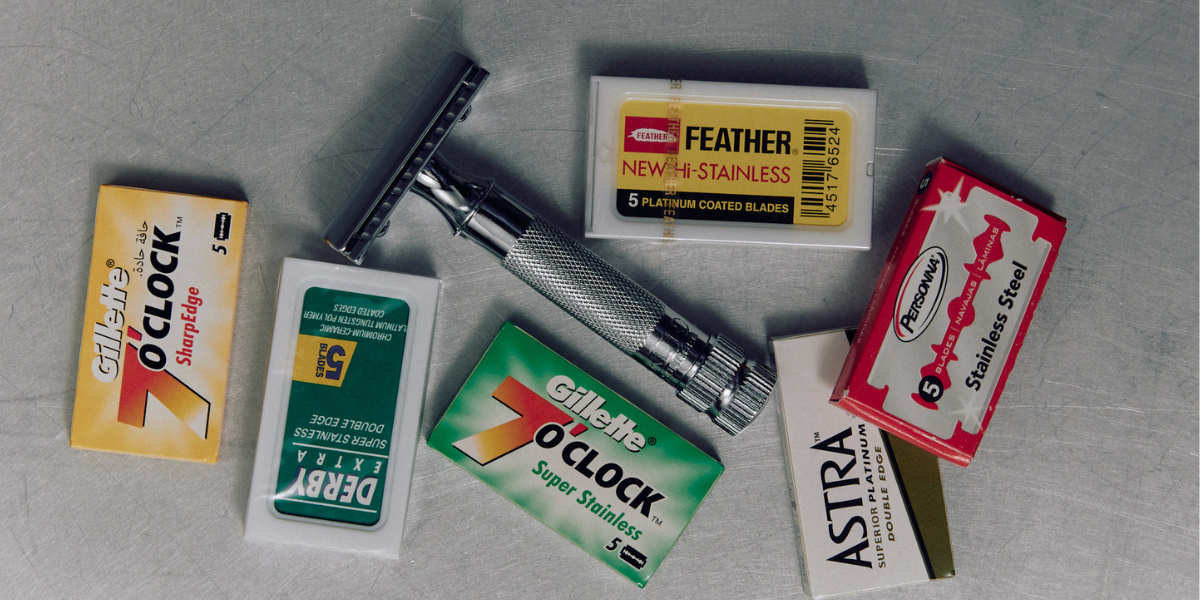
Smooth Sailing: Know Thyself
Because that’s the beginning of all wisdom. Aristotle’s words apply here. Pay close attention to the varied direction of hair growth, which possesses its own particularities. Whilst it is generally advised to follow the direction of growth on your first pass – with the grain – this does not necessarily mean that all growth follows a downward trajectory. Certain areas, namely the neck and chin, occasionally move sideways or form spiral-like patterns. Although shaving is for all, it is not a one-size-fits-all endeavour. Take care to examine the direction of growth, and you will be rewarded with a smooth shave concomitant with mastery and self-understanding.
Blade Runner: Angles and Strokes
An approximately 30° tilt is key, because at this angle, the blade of your safety razor is adequately exposed whilst the safety bar can perform its function. The trick is understanding that the face is not a flat surface, but rather a composite of angles that requiring continued adjustment of the razor. Adopting short strokes, no more than an inch, opposed to long sweeping ones minimising the risk of cuts, unwanted tugs and the clogging of the device. Even more, short and controlled movements allow the continued adjustment of the razor – feedback, if you will – ensuring the perfect angle is attained.
Foam Sweet Foam: A Necessary Lather
An indulgence but equally a necessity, a shave is not a shave without a lather: a lubricating emulsion of fats that soften stubborn stubble and enable the razor to glide across the skin’s surface, free of irritation and redness. A quality shave should be comfortable, and a shaving cream or soap worked into a velvety thick foam with a shaving brush makes all the difference. A brush saturated with comfortably hot (not boiling) water, rung of its excess, is to be loaded with shaving product and worked in swirls, transforming the product into a mosaic of white and air. Work it into the area to be shaved generously, lifting the hair in the process.
We stock a wide range of shaving soaps, creams, gels, oils, and foams which pair perfectly with a shaving brush.
Smooth Operator: A Razor-Sharp Blade
Little wonder the phrase ‘razor-sharp’ gets brandished around. Fresh double-edge razors are amongst the sharpest objects in the everyday toolkit, and the exertion of laboured force and pressure is superfluous when met with the challenge of severing stubble. Let the weight of the device do the work for you – they are generally weighted for this very reason. Gentle is best, as the mild resistance of hair follicles becomes a reassuring sound of the razor’s efficacy. To be sure, make good use of both sides of the razor, rinse under the tap frequently to unclog the device of hair, and replacing the blade the moment it begins to underperform. A blade’s edge will begin to dull from the beginning of its use, but should last several shaves until it requires replacement.
Unsure which razor to use? We have a quiz for that.
Blades vary in sharpness and respond differently to skin types – no blade is objectively better than the other. We recommend trying a Blade Sample Pack to find the one best for you.
Stubble Trouble: To Pass or Not to Pass?
For unparalleled closeness, a second pass replete with a new layer of lather after one’s first full shave ensures any errant follicles are captured by the edge of your razor. Opting to go perpendicular or against the grain rewards one with closeness as the hair is cut at an even shorter length. However, for certain growths and skin-types, this can cause irritation and discomfort. Determining whether this is appropriate for you is a matter of self-assessment; a matter of not forcing something that your skin and hair does not want.
Slow and Steady - But it's Not a Race!
The time of a shave should not be glossed over. And whilst the virtues of an unhurried shave are manifest, taking your time ensures the learning curve is never a steep one – not that it ever was! Developing a comfortable and efficient technique is essential to the enjoyment of a wet shave. Make a ritual of the process with aftershave products, so to soothe the skin and to enhance one’s pleasure. As a result, the face is reborn, pristine, and ready to face the world with newfound confidence.
Have a go! You are ready to start shaving with a safety razor.


